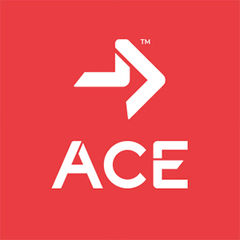When you’re a kid, it’s not about what’s “good for you” or what fulfills the recommendations of clinical researchers—it’s about what’s fun!
Global health recommendations suggest that kids accumulate at least 60 minutes of moderate to vigorous activity daily. Unfortunately, the majority of kids in the U.S. are not meeting these recommendations. How can we change those statistics and how can we make something that is necessary more fun and appealing to kids?
Typically, fitness pros exercise specialists encourage adults to participate in steady-state exercise such as running, biking, swimming or walking to get their daily exercise. Studies have shown this to be an effective method for adults to improve aerobic fitness. However, the same style of exercise is not equally effective or enticing for our youth and adolescents. Steady-state exercise requires fewer motor skills and less mental involvement and quickly gets boring for kids.
Yes, 60 minutes of aerobic exercise is important for the health of our kids, but it’s equally important to incorporate some instruction, skill and mental involvement in those 60 minutes a day. We also need to include the necessary skills needed for physical development, such as balance, coordination and general fitness. That’s why fitness programs designed to get kids active require more constructive planning than those created for the average adult.
Here are some ideas for designing an hour of exercise for kids that incorporates a variety of elements:
1. Include short, quick bursts of high-energy exercises with short, brief rest periods.
2. Alternate between higher-effort and lower-effort segments so that kids can complete an entire fitness session without feeling too exhausted.
3. Include a variety of movements like skipping, jumping, hopping, kicking and throwing to give children a well-rounded program.
4. Use fun equipment such as ladders, ropes, cones and playground balls to retain their interest and enhance the fun.
Two of the best games/drills for incorporating aerobic fitness training that is fun, dynamic and beneficial are kid obstacle courses and relay races. You can add fun equipment, incorporate a variety of exercises, use quick bursts of time or even assign partners. Check out the following obstacle course and relay race and try it with your kids on your next workout. For the sake of ease and simplicity, no equipment is needed for these games.
Cone Sprint Obstacle Course
Set up 4 cones in a line, each about 10- to 20-yards apart.
Have all the kids start at cone 1 together.
When you blow the whistle, call out a number 1 to 4.
Each kids runs to the number cone that was called and performs the exercise or drill at the cone.
When you blow the whistle for the second time, each kid runs back to cone 1 and runs in place.
When everyone is back and ready, blow the whistle again and call out a different number.
TIPS:
1. Try and mix up the numbers called, such as a sequence of Cone 2, Cone 4, Cone 2, Cone 3, Cone 4.
2. Pick a fun exercise or drill to perform at each cone.
Cone 1: Jumping jacks
Cone 2: Foot fires
Cone 3: Mountain climbers
Cone 4: Single-leg balance hops
3. After you call out at least 4 to 8 cones, have the kids take a rest by playing a circle game like telephone, where they can continue to be engaged and have fun, but without the bursts of energy.
4. Repeat another Cone Sprint Obstacle by assigning these exercises to different cones (cone 1 switches to mountain climbers, cone 3 switches to jumping jacks, etc.)
15-Yard Jumping Jack Relay Race
Set up 2 cones 15-yards apart
Depending on the number of players in each line, pick a modality of running, skipping or hopping for each player.
Each player performs a different modality to reach cone 2.
Each player performs 15 jumping jacks at cone 2 and then heads back to cone 1 to perform the same modality as they did to get there.
TIPS:
1. Try to assign a different modality for each player in line.
Player 1: Forward run (15 jacks), forward run back
Player 2: Backwards run (15 jacks), backwards run back
Player 3: Side shuffle (15 jacks), side shuffle back
Player 4: Skip (15 jacks), skip back
2. After the relay is over, allow the kids to change positions so that each kid is able to try each player position.




 by
by 





